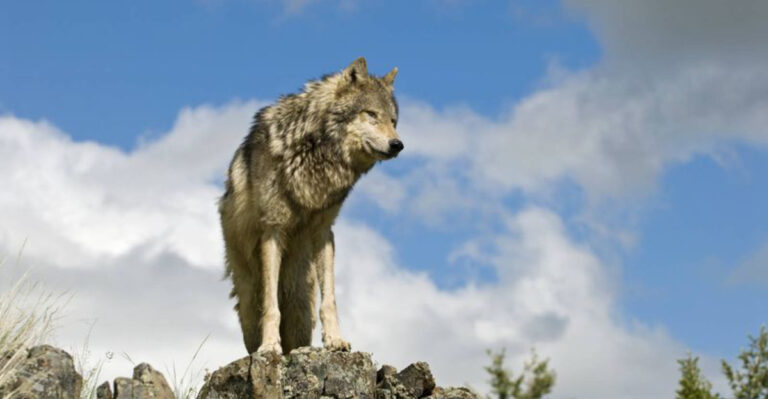What Do Camels Eat? A Look At The Diet Of Desert Survivors
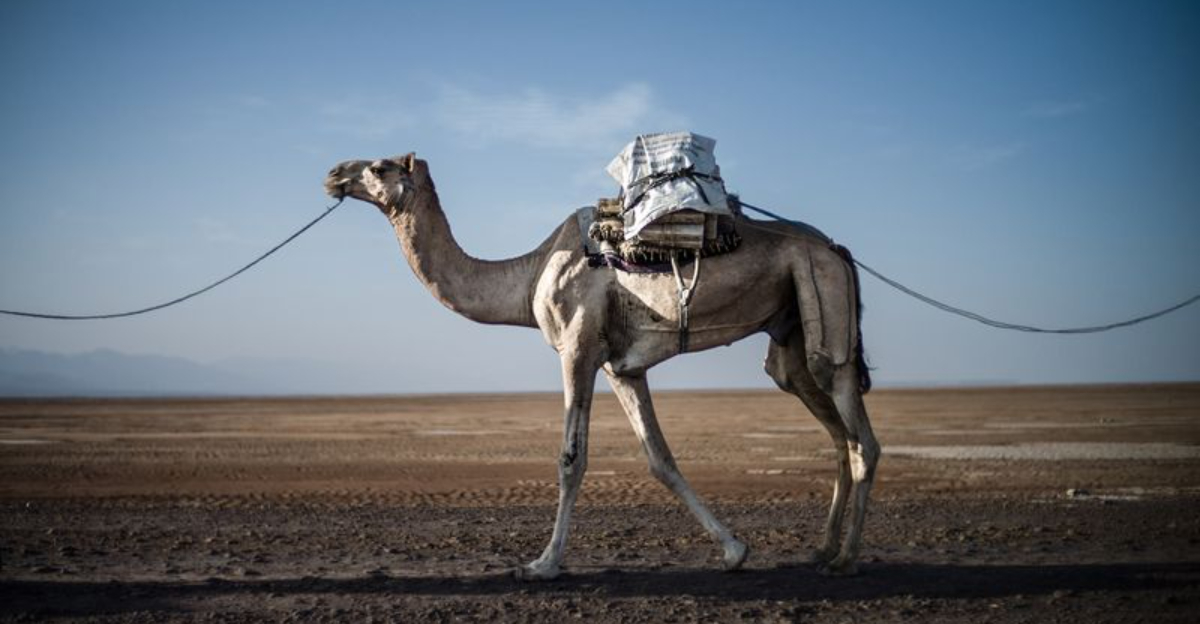
Ever wondered how those humped heroes of the desert manage to survive in such harsh conditions? A camel’s remarkable ability to thrive in arid landscapes comes down to their incredibly adaptable eating habits.
These resilient creatures have evolved specialized digestive systems that allow them to extract maximum nutrition from even the most unappetizing desert plants.
1. Thorny Desert Plants
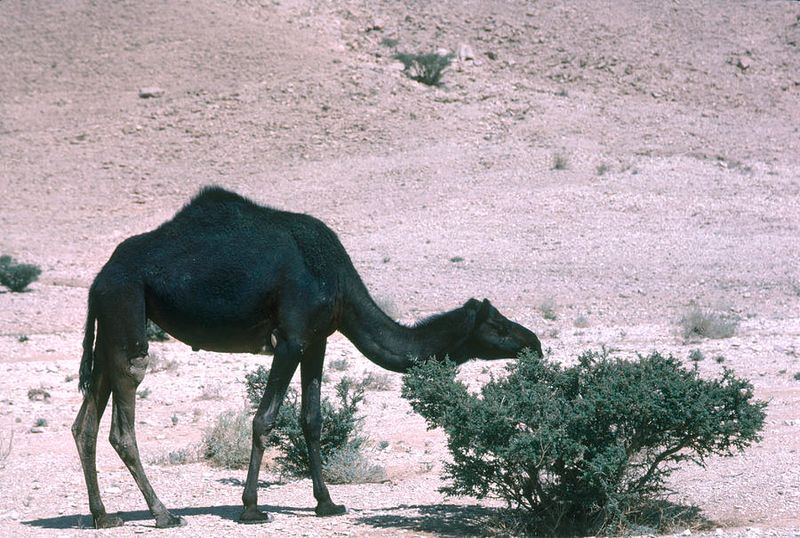
Imagine munching on cacti covered in painful spines! Camels have tough, leathery mouths that let them chomp on thorny plants other animals wouldn’t dare touch.
Their specialized lips can delicately pick around the sharpest thorns to get to the nutritious parts inside. Desert vegetation like acacia trees becomes a tasty treat rather than a painful problem.
2. Salty Shrubs
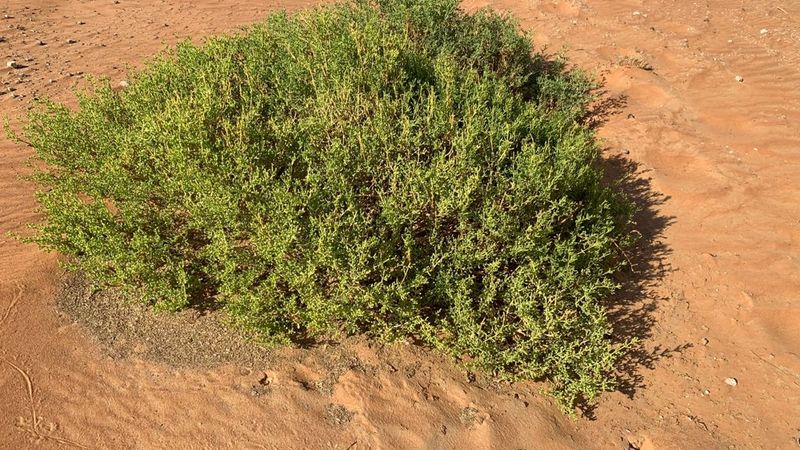
Salt-laden plants that would make other animals sick are just another snack for these desert masters. Their unique physiology allows them to process saltier vegetation than almost any other mammal.
Desert shrubs like saltbush and greasewood make up a significant portion of their diet in certain regions. What looks like an unappetizing bush to us is a nutritional goldmine for camels.
3. Date Palms

Sweet treats of the desert! Camels go crazy for date palm fronds and fallen dates whenever they’re lucky enough to find them.
These nutrient-rich fruits provide essential sugars and energy. Domesticated camels often receive dates as rewards from their handlers. The natural sweetness makes them a favorite camel dessert in regions where date palms grow.
4. Dried Grasses

When the desert turns harsh and barren, camels turn to dried-out grass that other animals would ignore. Their specialized stomachs extract every bit of moisture and nutrition from these seemingly worthless plants.
Even grass that’s been baked by the sun for months still contains valuable fiber. Camels can consume enormous quantities of this low-quality forage and still thrive where other animals would starve.
5. Twigs And Branches
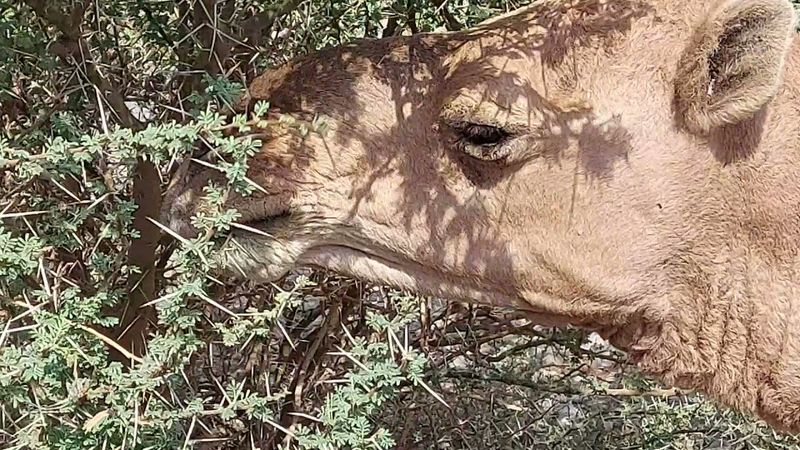
Nothing goes to waste in a camel’s world! These resourceful creatures happily munch on woody twigs and branches that would be too tough for other herbivores.
Their powerful jaws and grinding teeth break down fibrous plant material with ease. A camel can strip a small tree of its leaves and tender branches in minutes, making the most of sparse desert vegetation.
6. Desert Melons

Talk about finding hidden treasure! Wild desert melons provide a rare juicy treat and valuable water source for thirsty camels.
These moisture-rich fruits grow in some desert regions after brief rainy periods. Camels have an uncanny ability to smell water from great distances, helping them locate these precious melons. One good-sized melon can provide both nutrition and hydration.
7. Human-Provided Grains
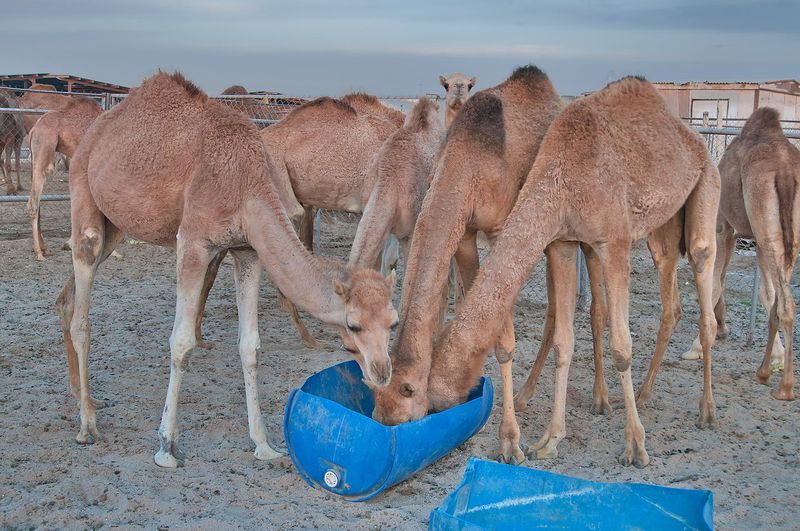
Domesticated desert companions often enjoy a more varied menu! Camel caretakers supplement their diets with nutritious grains like barley, wheat, and oats.
These concentrated energy sources help working camels maintain their strength. Especially important during long desert journeys, these grains provide essential carbohydrates and proteins that might be scarce in natural desert vegetation.
8. Camel Thorn Bush
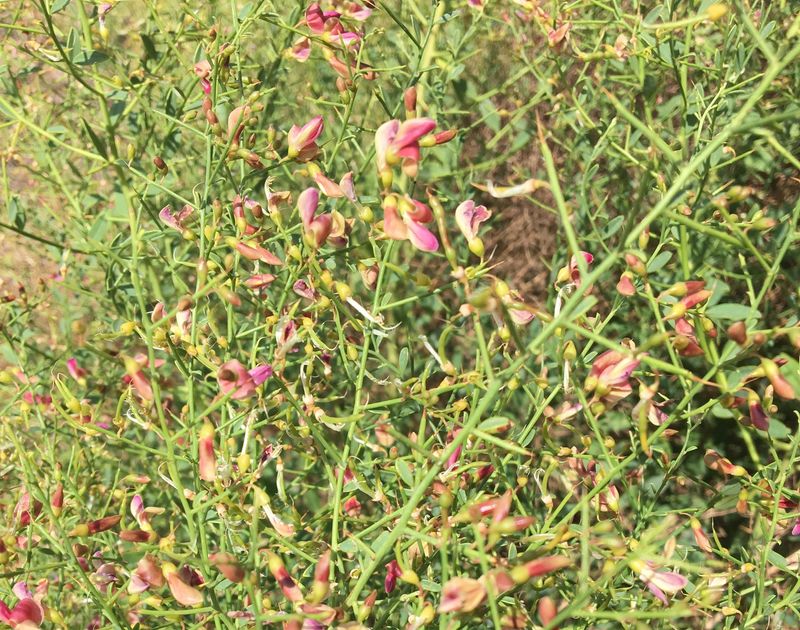
Named after its number one fan! This hardy desert plant (Alhagi maurorum) earned its nickname because camels absolutely love munching on it.
Despite its intimidating thorns, the bush provides excellent nutrition. Rich in protein and minerals, it’s a camel superfood found across North Africa and the Middle East. Camels will travel surprising distances when they catch the scent of this favorite food.
9. Desert Wildflowers
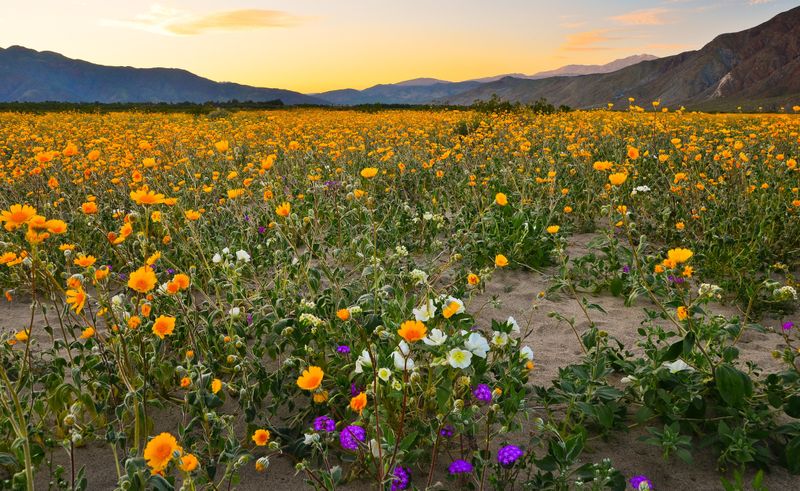
After rare desert rains, these ships of the desert waste no time feasting on colorful wildflower blooms! These nutritional jackpots appear briefly after rainfall.
Packed with vitamins and minerals, desert wildflowers provide a dietary boost. Camels will enthusiastically graze flowering areas, consuming everything from tiny desert daisies to brilliant poppy blooms before they disappear in the harsh sun.
10. Salty Mineral Deposits
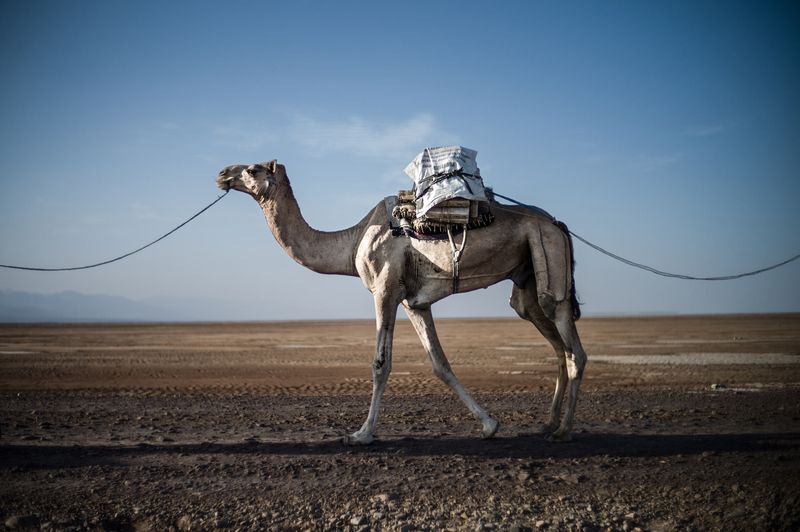
Ever seen a camel licking the ground? They’re actually after natural salt and mineral deposits that form on desert surfaces!
These essential nutrients help maintain proper bodily functions. Unlike many animals, camels can tolerate high salt levels without getting sick. Their specialized kidneys efficiently process these minerals while conserving precious water.
11. Tamarisk Trees
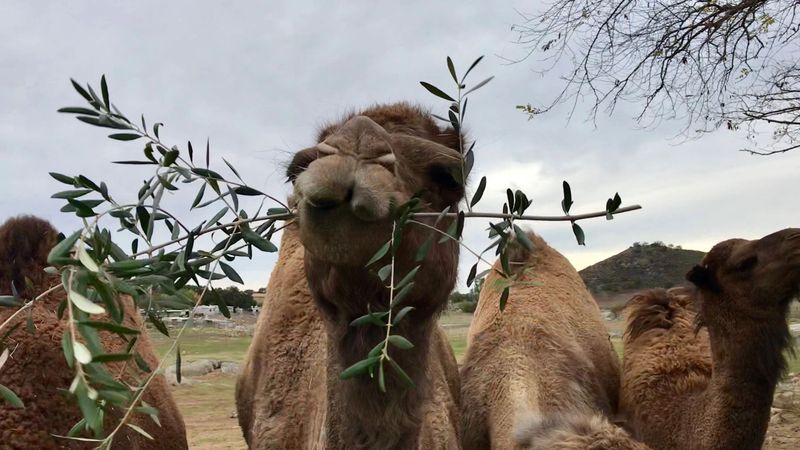
With feathery leaves that trap precious moisture, tamarisk trees are like desert buffets for hungry camels! These salt-tolerant trees thrive where other plants fail.
Camels strip the tender branches clean of their tiny scale-like leaves. The high salt content would make most animals avoid tamarisks, but camels’ specialized digestive systems handle it with ease, making these trees a reliable food source in harsh environments.
12. Seed Pods And Beans

Nature’s protein packets! Desert legumes produce nutrient-rich seed pods that camels crack open with their strong teeth.
These pods contain beans packed with protein and essential nutrients. Many desert plants protect their seeds with tough casings or bitter compounds, but camels’ digestive systems have evolved to handle these defenses. Some pods even provide valuable moisture when other water sources are scarce.
13. Scraps And Leftovers
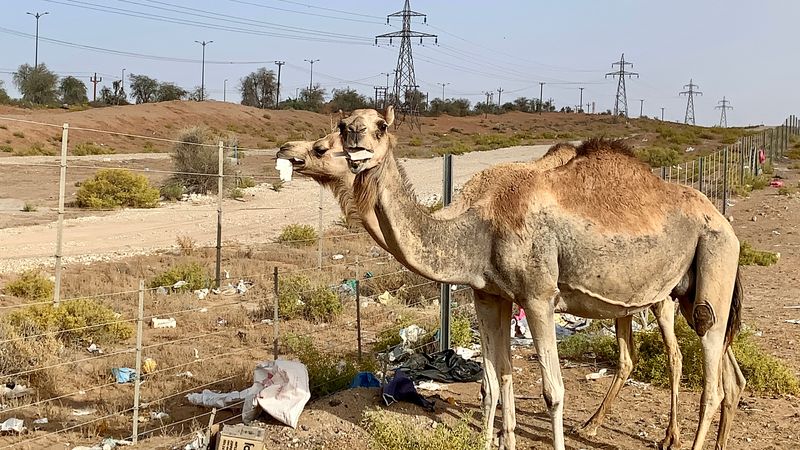
Opportunistic eaters extraordinaire! Domesticated camels often snack on human food scraps like bread, vegetable peels, and fruit rinds.
Their adaptable digestive systems can process a surprising variety of foods. While not their natural diet, these supplementary treats provide additional nutrition in human settlements. Camels in markets or tourist areas quickly learn to recognize and seek out these easy meals.
14. Almost Anything In Desperate Times

Survival champions don’t get picky! During extreme drought, camels have been observed eating virtually anything organic – including tent material, rope, and clothing!
This behavior shows their remarkable adaptability in crisis. While not nutritious, chewing these items stimulates saliva production and helps camels cope with hunger. Their legendary survival skills include this ability to make do with whatever they can find.




